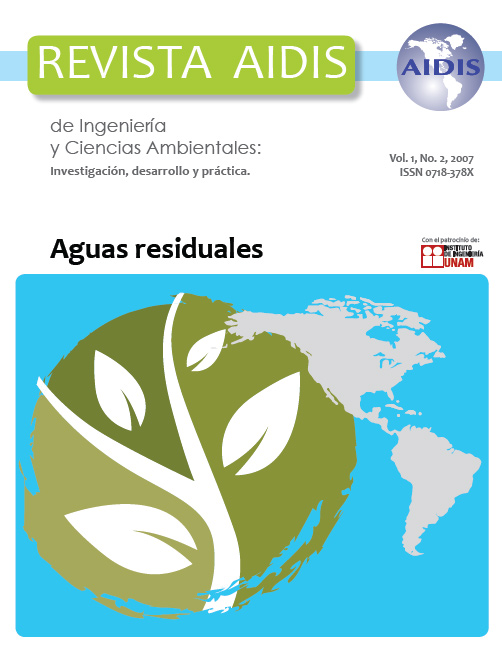Uso de alagado construído (Wetland) no condicionamento de efluente de lagoa de estabilização para fins de reúso na agricultura no semi-árido brasileiro
Contenido principal del artículo
Resumen
The Brazilian semi‐arid stretches for an area that covers the largest part of all Northeast Region States (89.5%). The semi‐arid climate, characterized by a low annual rainfall of 400 to 600 mm during the months of January through April, prevails in approximately 60% of the State of Rio Grande do Norte. The characteristics of the region, such as scarce and uneven rainfall, shallow soils, temporary rivers and sparse vegetation, along with the type of land occupation, have resulted in precarious living conditions for the majority of its inhabitants. The planed reuse of domestic wastewater in agriculture has been indicated as a measure to mitigate the lack of water resources in the semi‐arid and is being considered as an alternative to the farmers, specifically to those located around the cities. This paper presents the results of the evaluation of a constructed wetland used for conditioning the effluents of a primary facultative pond in Parelhas, State of Rio Grande do Norte – Brazil, aiming at their reuse in fertirrigation. Full and pilot‐scale studies have shown that constructed wetlands have good capacity of reducing carbonaceous matter, suspended solids, nitrogen, phosphorus and pathogenic organisms. This reduction is accomplished by several mechanisms such as: sedimentation, filtration, precipitation and chemical adsorption, microbial and vegetal interactions, and complexation. The remaining concentrations of organic matter and nutrients were analyzed. It was verified average COD and SS removals of 73% and 85%, respectively. As for the hygienic quality, it was found that undesirable concentrations of thermotolerant coliforms were present in the final effluent during the whole period. The system presented concentrations higher than 105 CF/100mL in the effluent. Helminth eggs were not found in the effluent, which confirmed the efficiency of the system in removing these parasites. Due to the low hygienic quality in this particular case, the wetland effluents could only be used in restricted irrigation, because they presented thermotolerant coliform concentrations higher than 2 log units in relation to the standard established by the WHO (1989) for use in unrestricted irrigation, that is, 103 CF/100 mL.
Detalles del artículo
Cómo citar
[1]
Pereira, M., Silva, D., Andrade Neto, C.O., Brito, L.P. y Melo, H.N.S. 2009. Uso de alagado construído (Wetland) no condicionamento de efluente de lagoa de estabilização para fins de reúso na agricultura no semi-árido brasileiro. Revista AIDIS de ingeniería y ciencias ambientales: Investigación, desarrollo y práctica. 1, 2 (nov. 2009).
